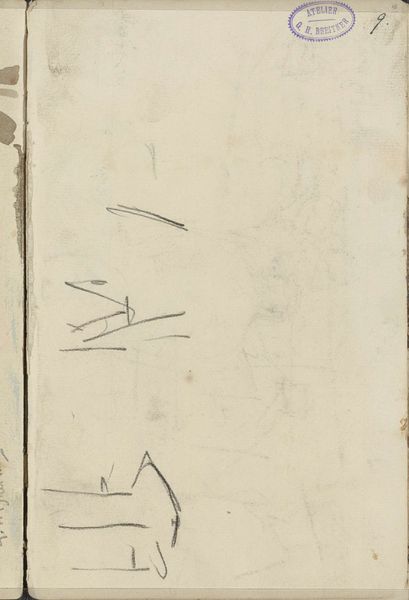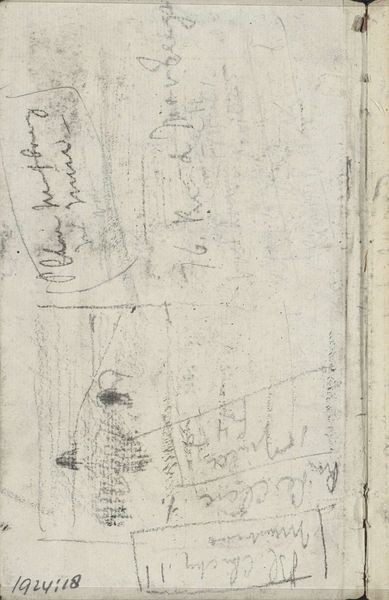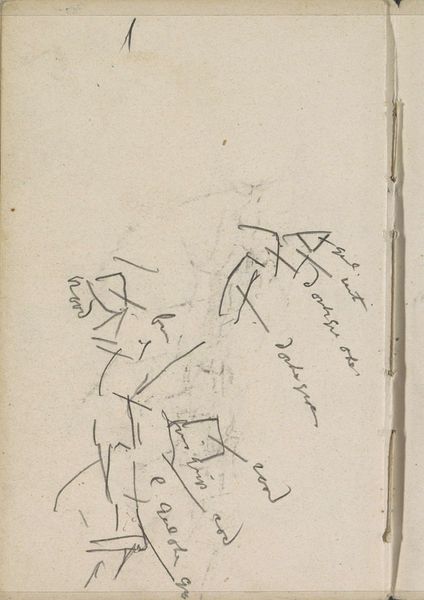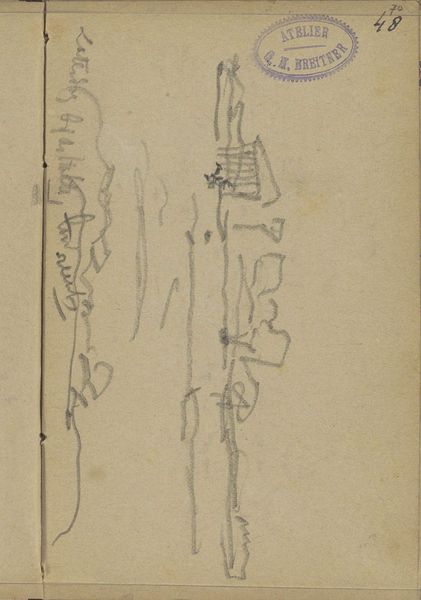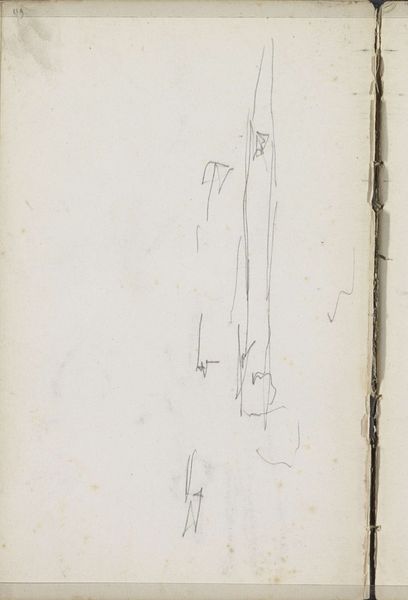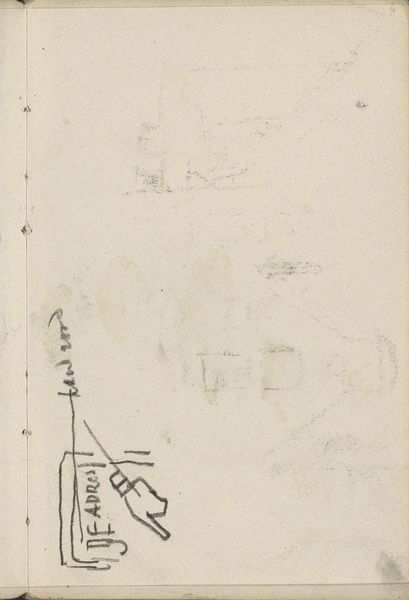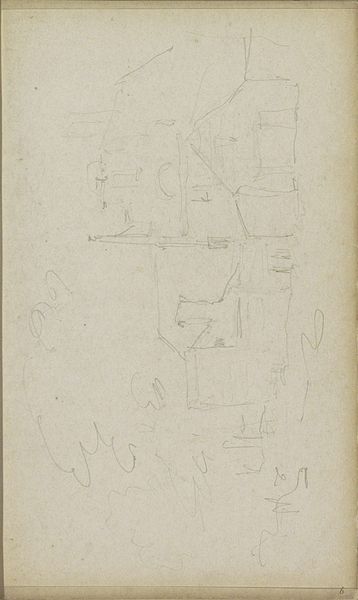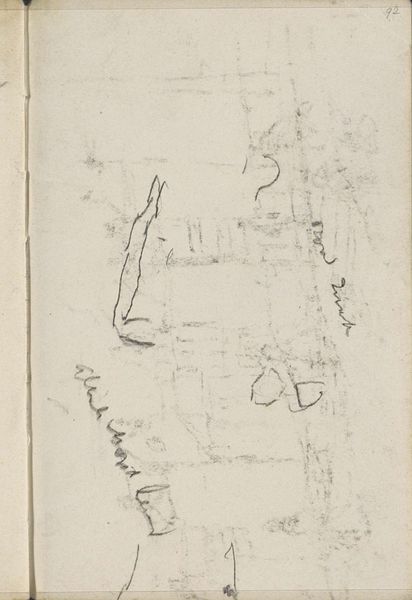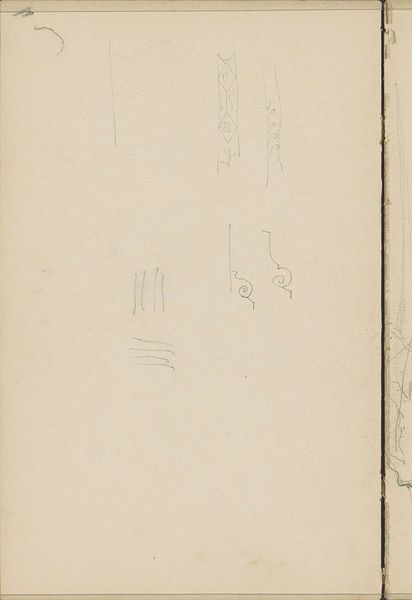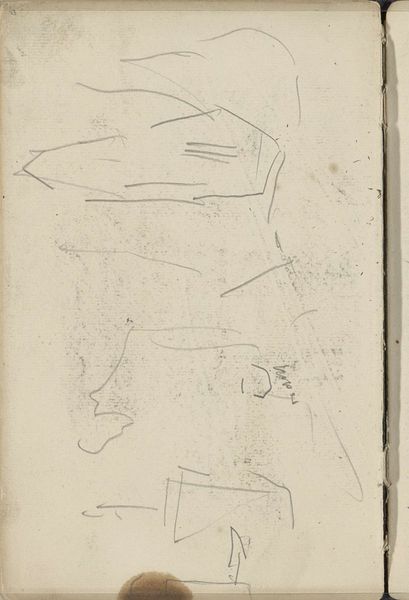
drawing, pencil
#
drawing
#
impressionism
#
landscape
#
pencil
#
abstraction
Copyright: Rijks Museum: Open Domain
Editor: This is "Studie," a pencil drawing by George Hendrik Breitner, sometime between 1880 and 1882, housed at the Rijksmuseum. The looseness and sketch-like quality create a sense of fleeting observation. What do you see when you look at this drawing? Curator: Well, first I’m drawn to the raw quality of the materials themselves. It's a pencil sketch – humble materials suggesting a directness and immediacy of the artist's hand. Consider the social context. This was a time when traditional academic painting was still dominant. Breitner’s choice to focus on a seemingly insignificant “study,” challenges that hierarchy. Editor: I see what you mean, it is so very different than a formal portrait from that time! Curator: Exactly! And how was this drawing produced? Was it done quickly, on the spot, to capture a fleeting impression? The smudges and erasures – are they evidence of Breitner grappling with the representation, with the labor of seeing and recording? These ‘errors’ are critical to how we read the final image. Editor: So you're focusing less on *what* is depicted and more on *how* it was made? Curator: Precisely! The “what” is less important than the “how” and “why.” Breitner isn’t trying to create an illusionistic window onto the world. He’s interested in the materiality of the drawing itself. The paper, the pencil, the artist's hand – these are the primary subjects. Consider the materiality. Does the texture of the paper influence the lines? Editor: That’s an interesting point. Thinking about the process opens up a whole new way to appreciate the drawing. It isn't just a quick landscape. Curator: Right, we start to ask questions not about representation, but about production and the socio-economic conditions surrounding art making itself. A landscape for whom? A depiction, or an action? Editor: I see it, now. This helps me look at art with different eyes. Curator: Me too; it's a reminder that art isn't just about the finished product, but the whole material and social process that brought it into being.
Comments
No comments
Be the first to comment and join the conversation on the ultimate creative platform.
